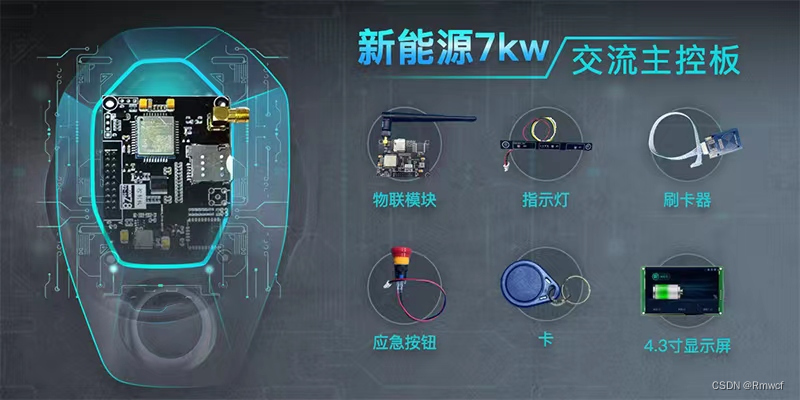With the promotion of new energy vehicles, AC charging piles have ushered in a huge market demand, and people have higher and higher requirements for the convenience and safety of vehicle charging. The CP signal is mainly used for AC charging piles. The charging pile and the car can only communicate through the CP signal to judge and control the charging current and status.
The CP signal of the car charging pile is a signal that controls the charging current. During the charging process of the electric vehicle, the charging pile will generate a CP signal, which will send a signal to the vehicle through the communication line between the vehicle charging socket and the vehicle to control the charging current of the electric vehicle. Corresponding to several states of the charging gun, such as drawing the gun, inserting the gun, charging preparation, charging start and charging stop, it is mainly used to monitor the interaction between the charging pile and the new energy vehicle, and is the handshake signal between the car and the charging pile. The CP signal can prevent overload and short circuit between the vehicle and the charging pile, and ensure the safety of the charging equipment and electric vehicles. When the charging pile detects that the battery of the vehicle is full or has other problems, it will automatically send a CP signal to the on-board charger to stop charging to protect the battery and charging equipment from damage.

The CC signal is a judgment signal whether the charging plug and the charging socket are connected or not, and the capacitor resistance value is judged according to the CC signal. The CP signal judgment determines the power supply capability of the power supply equipment through the PWM value, the CC signal is connected to the car charging port, and the maximum power supply current allowed by the AC charging pile is confirmed by detecting the PWM signal of the CP circuit.
Common charging pile charging faults are as follows:
1. Slow charging speed or no charging: it may be a fault in the power line, and it is necessary to check whether the power line and cable connection are normal.
2. CP error: It may be that the CP signal transmission is abnormal. It is necessary to check whether the charging plug and socket are affected by external objects, and whether the fan is normal.
3. Over-temperature protection: The charger itself also has protection measures. When the temperature is too high, it will automatically stop charging, and it needs to wait for a period of time before restarting charging.
4. Electric vehicle battery failure: If it is the battery failure of the electric vehicle itself, it is recommended to contact professional after-sales service for repair or replacement.
5. Charging pile tripping: tripping causes the charger to fail to charge, which may be due to an internal short circuit of the charger. It is necessary to check whether the AC voltage, CP line, and charger connection are normal, or replace the charger for troubleshooting.
6. Charging without voltage: Check whether the charging cable plug is in poor contact, disconnected or the output fuse of the main board is disconnected.
The key to maintaining the charging pile is to regularly check and maintain the charging equipment and power lines to ensure a stable power supply, and at the same time follow the charging equipment instruction manual and safety regulations to ensure the stability and safety of the charging process.